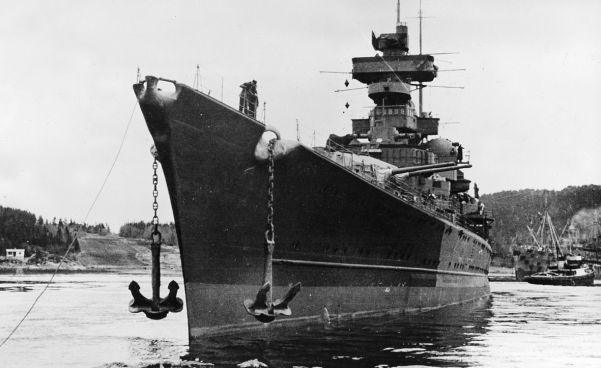August
Germany, Resistance
General Ludwig Beck, Chief of the General Staff, having sent Ewald von Kleist-Schmenzin to London to try and warn the British of Hitler’s plans, submits a paper on the danger of going to war to Brauchitsch, who informs Hitler. Beck is forced to resign.
Germany, Anti-Semitism

The destruction of the Nuremberg synagogue. A decree is issued requiring all Jews to carry the first name of either “Israel” or “Sarah” from 1939.
17 August
Nazi Party, Waffen-SS
Hitler defines the raison d’être of the SS-Verfügungstruppe as being an armed force at his personal disposal, stating that it is not a part of the armed forces nor of the police forces already in existence. Therefore, it is able to be legitimately trained by the Reichsführer-SS in Nazi theories of race and also to be manned by volunteers who have completed their commitment in the Reichsarbeitsdienst, the Reich Labour Service. The Führer decree also states that in time of war, elements of the Totenkopfverbände will reinforce the SS-Verfügungstruppe. If mobilized, it will be used firstly by the commander-in-chief of the army under the jurisdiction of the army, making it subject only to military law and order, but still remaining a branch of the NSDAP and owing its allegiance ultimately to that organization. Secondly, in the event of an emergency within Germany, the SS-Verfügungstruppe will be under Hitler’s control through Himmler.
The army had always been suspicious of the SS. As the supposed sole arms bearers of the state, it regarded the creation of armed units within the SS as a betrayal by Hitler. It had been hypothesized that Hitler was playing a double game and allowing the expansion of the SS-Verfügungstruppe as a counter to any possible coup by the army.
In the early stages of his regime this was extremely unlikely, and Hitler bent over backwards in his efforts to appease the army. From these provisions emerged the first four of what were to become known in 1940 as the Waffen-SS divisions: the Leibstandarte Adolf Hitler, Das Reich, Totenkopf and Polizei, plus the nucleus of a fifth, Wiking.
22 August
Armed Forces, Navy

The heavy cruiser Prinz Eugen is launched.
